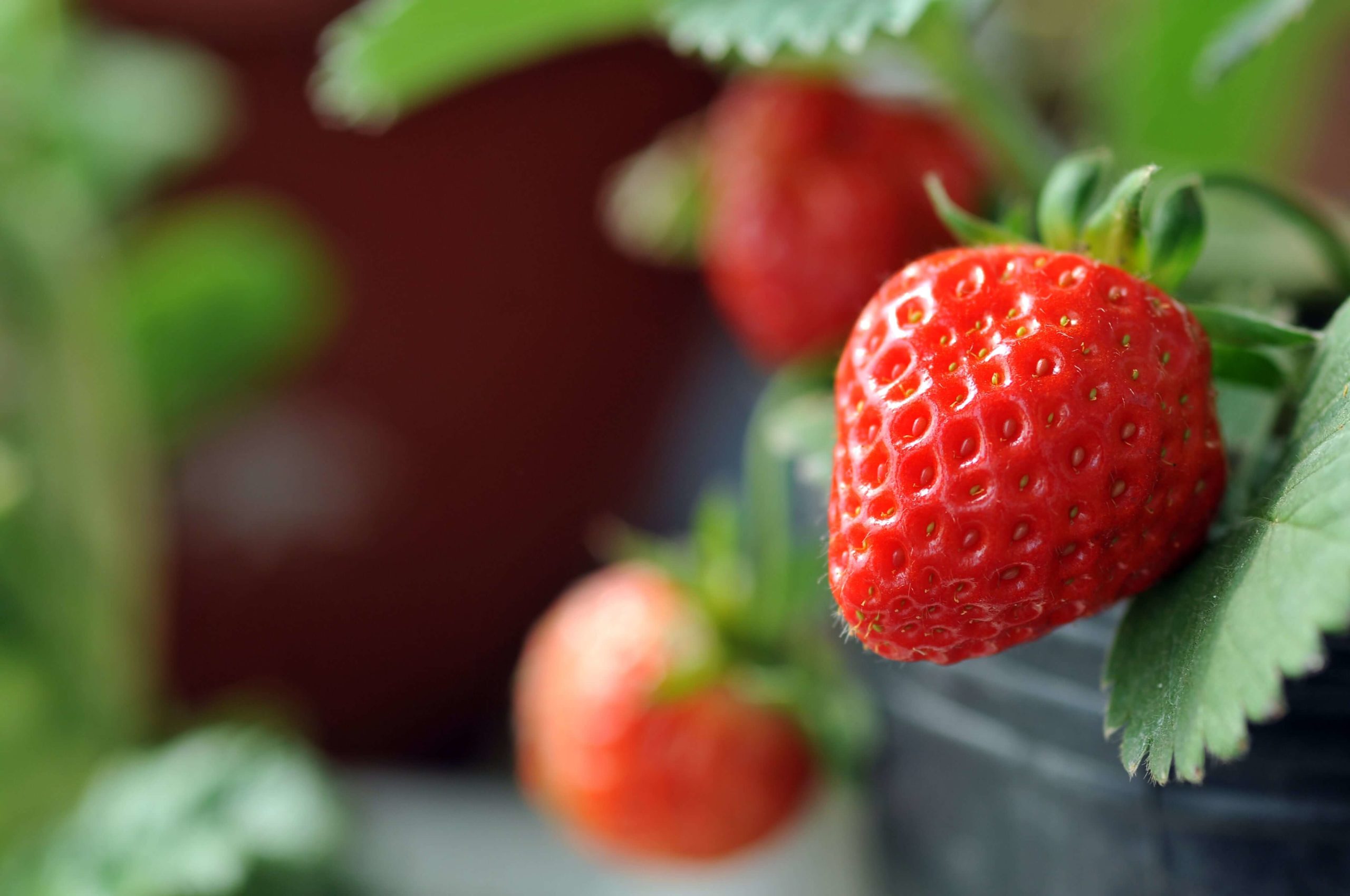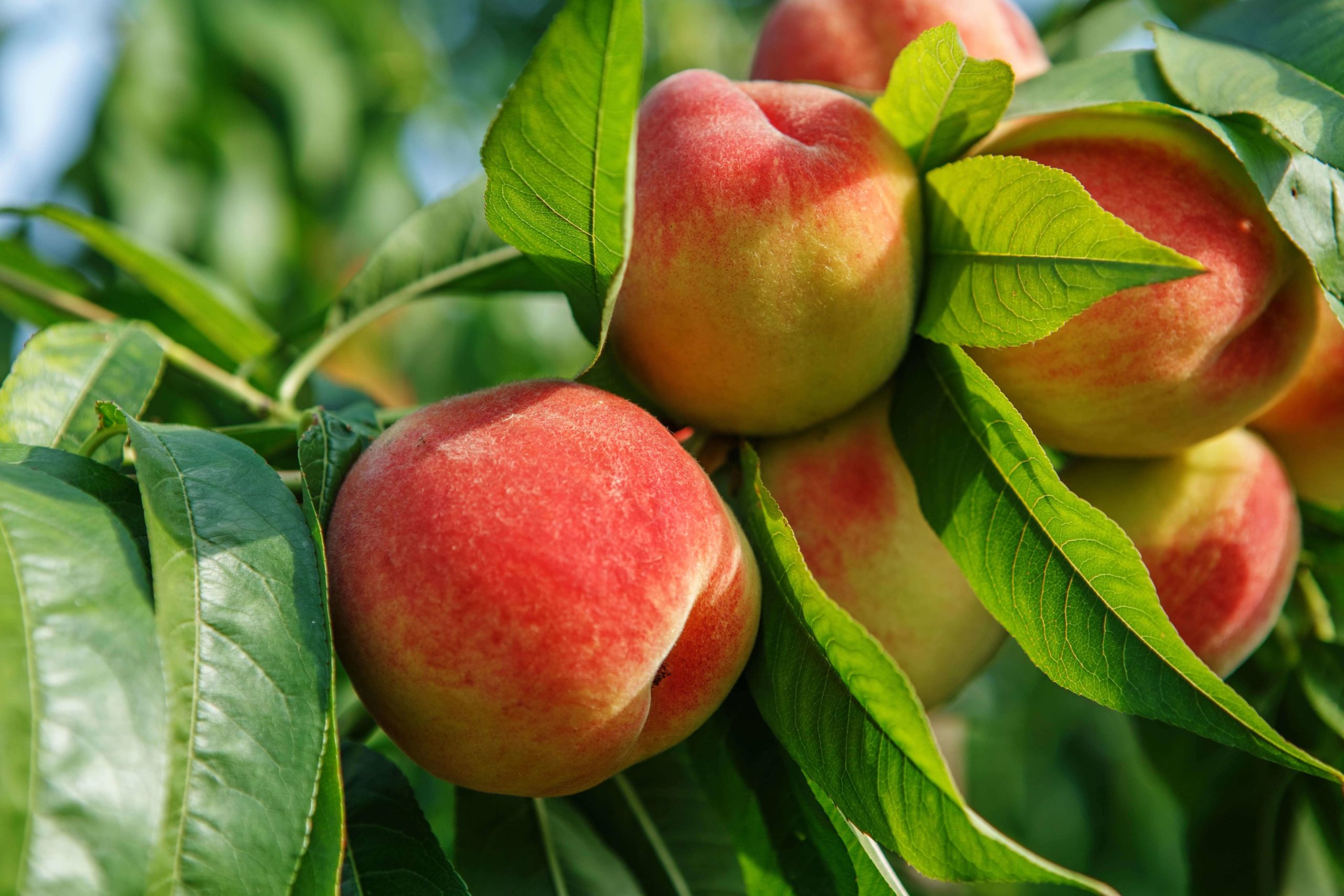How to Grow Fruit: A Guide to Indoor & Outdoor Fruits

Having a garden is one of the best parts of being a homeowner, but you don’t just have to focus on planting flowers in your backyard. You may have tried your hand at growing vegetables or growing lettuce at home, but did you know you can grow fruit as well?
Learning how to grow fruit at home isn’t as hard as it may seem. With a few helpful tips, you can become an experienced gardener in no time. In this blog, we’ll guide you on the best fruits to grow indoors or in your garden regardless of your location. However, if you are in Pennsylvania, check out our guide on growing fruit in PA.
How to Grow Fruit Indoors
There are a few ways to learn how to grow fruit inside. The first step is deciding which fruits you like the most. People usually assume fruits can only be grown outside, but keep in mind that a lot of types fair well indoors too.
One of the most important things to understand is the proper lighting needed for indoor plants. Below, we’ll cover the lighting requirements for each plant as well as other helpful tips to keep your fruit flourishing.
Bananas
Banana plants also have strict lighting requirements. A few hours of direct sunlight is fine, but too much will cause the leaves to burn. Typically, the plant needs about 12 hours of indirect sunlight daily. As these plants thrive in warmer temperatures, make sure that your thermostat doesn’t drop below 67 degrees.
When growing banana plants indoors, the soil should be able to drain well so that your plant doesn’t sit in too much lingering water. Always check the texture of the soil after watering too. It should have a thicker texture that’s similar to hummus.
The last thing to pay attention to is the pH level of your soil. There are different ways you can check the pH of your soil. In this case, the soil’s pH level should be between 5.5-7.0, and if you’d like to use a soluble fertilizer, make sure you only use it monthly. You may mist your banana plant daily but not as the sole watering method. Always keep an eye out for any root rot that may occur.
Strawberries
Strawberries typically require at least six hours of sunlight daily. If you can’t provide natural sunlight, you may use a grow lamp. The temperature should stay between 57-70 degrees, and the soil should never dry out. Strawberry plants grow best on a windowsill because they’re exposed to the brightness of the sun without being burned by direct sunlight.
When planting strawberries indoors, you have the option of using a container or strawberry planter. As you place the seeds in the soil, make sure you space them at least 10 inches apart. Always keep the soil damp, and try adding soluble fertilizer to the mix about every 10 days for the best results.

Raspberries
Gowing berries inside is much simpler than you may think. Raspberries need at least 6-8 hours of direct sunlight daily. When growing raspberries, use a container that’s at least 15 inches in diameter. Using a drainage tray beneath your container will help prevent any water spillage, and can also safeguard the plant from root rot.
Instead of only using soil, add two inches of pea gravel first. Then, as you add the potting soil, mix in peat moss and perlite. You can also add two inches of wood chips to the top of your container surrounding your plant. This will ensure more moisture gets to the roots.
Oranges
Orange plants need at least eight hours of sunlight daily. However, if you have a southern window that’s away from vents, you can leave it in the sun for around 12 hours. When it comes to the temperature, 65 degrees is a happy medium, but anything between 55-85 degrees would work as well.
Similar to other citrus fruits, oranges come from trees. This means, that growing citrus from seed indoors requires you to use a pot or container. It should be plastic, ceramic, or clay and should be larger than the plant’s root ball. Try adding stones throughout your soil, that way air can circulate better throughout the pot.
Make sure you’re watering your orange plant whenever the soil begins to look dry. Using moss or pebbles can help maintain the moisture of the plant. Additionally, the soil should remain acidic with a pH between 6.0-7.0, and include loam in it. If you’re worried about getting the correct soil, most home improvement or gardening stores have citrus tree potting soil that will work perfectly.

Fruits to Grow in a Garden
Another way to learn how to grow fruit is by planting seeds in an outdoor garden. Unlike growing fruit indoors, when you’re planting outside you need to take a few things into account like location, temperature, climate, and fruit tree growing zones. Below, we’ve listed a few easy fruits to grow in your garden that would be a good starting point for any beginner.
Plums
The first thing to keep in mind when planting fruit trees in your garden is the location. For plum trees, you’ll want to make sure you choose an area that receives full sun, as it should get at least 6-8 hours of direct sunlight a day. Plant your plum tree in loamy, well-drained soil, and avoid low areas where frost may settle.
Before planting, dig a hole that’s a few inches deeper and wider than the tree’s roots. If you’re planting a bare-root tree, set the tree on top of a small mound of soil in the middle of the hole. Fill the hole and make sure the roots are fully covered with no apparent air pockets remaining.
Once the tree is planted, water thoroughly. This will help the soil settle around the roots. For the first few weeks, keep your plum tree well-watered, or whenever the soil is beginning to look dry.
Apples
The first thing to know when planting apple trees is that they require a sunny location. These trees need full sun exposure for at least eight hours a day. The soil you use should have a pH balance between 6-7 and should be moist.
When planting, dig a hole that’s no deeper than the tree’s root ball and about twice as wide. Position the tree so that the graft union is about four inches above the soil line. If you’re planting a bare-root tree, check the roots to ensure they have spread apart and aren’t bent. Once the tree is in position, fill the hole with ⅓ volume compost, peat moss, or another organic matter.
The tree should be watered thoroughly after it’s planted, this will get rid of any remaining air pockets around its roots. Whether it’s from rainfall or you water it directly, an apple tree should get at least one inch of water every week.
Explore a few apple varieties you can grow.

Apricots
You should plant your apricot seeds in early spring. You’ll want to choose a sunny location because apricot trees grow best in full sun environments.
Ensure your tree has enough room to grow by checking for other root systems, pipes, power lines, or any other structure that may inhibit the root’s growth. It’s best if the soil’s pH level stays between 6.5-8.0 and is loamy and drains well.
As you begin to plant your tree, dig a hole that’s about six inches deep. This will leave room for the sprouting apricot seed. Cover your seed with a well-blended mix of soil and organic compost. You should consider protecting the planting site with a screen or hardware cover.
Once the seed is planted, water thoroughly. If you live in a cooler climate, you should water your tree at least once a week. For those who live in warmer climates, the tree should be watered at least three times a week. Always check the soil to ensure it’s moist, but never waterlogged. Remember, when the tree begins sprouting, remove the protective screen to allow it to fully grow.
Peaches
Peach trees should be planted in early spring or late winter. When searching for a planting site, choose an area that is sunny and shielded from the wind.
The pH of the soil should be between 6-7 and should be well-drained and sandy. If you can’t find an area with good drainage, try planting your peach tree in a raised garden bed.
As you dig the planting hole, make sure it’s a few inches deeper and twice as wide as the tree’s root ball. Hammering a tree stake at least 2 feet deep into the ground next to the hole will help the tree to grow correctly. Create a small mound of soil at the bottom of the planting hole, and put the tree in place, spreading the roots over the soil mound.
After planting the tree, soak the soil with water and wait until it drains. Fill the rest of the hole with soil, and pile a 3-6 inch high ring soil around the root zone. Try spreading organic mulch around the root zone, this will help seal moisture as well as enrich the soil.
The soil around your tree should always be evenly moist, but never sopping wet. The typical peach tree needs about two gallons of water per week.

Learning how to grow fruit is a great way to spend time outdoors and enjoy a tasty treat. As the warm weather approaches, consider creating your very own fruit garden that you can enjoy all summer long. Remember, even if you aren’t growing fruit yourself, you can shop locally to discover the freshest and tastiest produce in your hometown.
Interested in growing your own fruit? Our home and garden center has what you need to get started creating your garden today.
